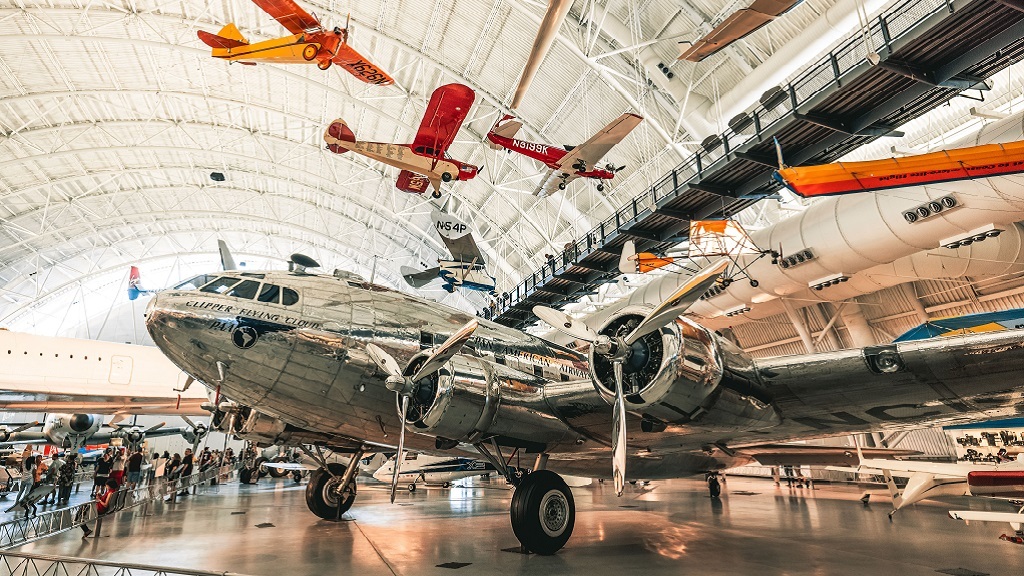Four Ways to Teach Students the Science and History of Flight
By Josh Underwood
Posted on 2024-08-15

Disclaimer: The views expressed in this blog post are those of the author(s) and do not necessarily reflect the official position of the National Science Teaching Association (NSTA).
National Aviation Week occurs every year during the week of August 19. It is a week for celebrating the history of aviation, and purposefully falls on Orville Wright’s birthday. Orville Wright, along with his brother Wilbur, are credited with inventing, building, and flying the world's first successful airplane, which had its maiden voyage on December 17, 1903. While your students may not be in the classroom during National Aviation Week, you can use the time between this week and the first day of flight to get students excited about the wonderful world above us!
Whether you have students who want to experience the fun in flight or students hoping to become a pilot or aeronautics engineer, here are four ways I get my students excited about learning the science behind the world of flight.
1. Paper Airplane Design Competition
One way to drive excitement is through competition, especially when students get to see their hard work in action. Paper airplane design is the perfect competition, as students learn aeronautic concepts while honing their understanding of engineering design principles. I share the video How This Guy Folds and Flies World Record Paper Airplanes, with my students, then challenge them to fold their own planes. Students work to fold a record-breaking design, then they can see how their planes stack up against others.
If you want to take your competition to the next level, try out the POWERUP Powered Paper Airplane Kits. Students can take their paper airplane designs, charge up the POWERUP 2.0 and clip the motor to their design, then see their planes fly even further. This has been a great tool in my classroom to introduce STEM concepts and the engineering design process. Students test their designs and adjust their planes to get them to fly successfully, while also working together and sharing ideas on how to improve their designs.
Some students might want to vary from the traditional airplane design; fortunately, the internet offers many unique flyers such as this paper bat and this paper tube design. Overall, paper airplane design competitions are an easy and fun way to get students curious about flight!
2. Museum Content
Knowing the history of flight can help students understand how we reached this point in air transportation. Several aviation museums across the country might be local to you and worth a visit. Here’s a full list of air museums in the country if scheduling a field trip is possible.
The Smithsonian Air and Space Museum is one of the best museums in this field, and while not everyone lives near Washington, D.C., or can schedule a field trip, the museum offers virtual tours. Students can spend a day touring exhibits such as The Wright Brothers and the Invention of the Aerial Age, Destination Moon, or America by Air. Tours include various “stops” and background information on each object. The website also has several resources for teaching about aviation, including lesson plans, activities, and illustrations that teachers can use in their classrooms.
3. Join Aviation Organizations
Some students might be inspired by all of these activities, so be ready to answer questions about how they can become part of the aviation community. The Aircraft Owners and Pilots Association offers student memberships that allow students access to more resources and flight-specific scholarship opportunities.
Students can also get active at a local airport through the Experimental Aircraft Association (EAA) Young Eagles events. These events focus on getting the younger community active at local airports through activities such as building RC aircraft, constructing full-size airplanes, and taking free flights over their local area.
4. Flight Simulators
If you have students who want to see how they would do at the yoke, direct them toward a flight simulator. While some simulators require high-performance computers to render the highest graphics, much can be learned and enjoyed from free online simulators. I like to direct my students to GeoFS, which can run on a Chromebook.
If students are interested in high-performing simulators and rocket building kits, teachers can become a Civil Air Patrol Educator Member and request the kits that best fit their students’ interests. Teachers can learn more about those kits at https://www.gocivilairpatrol.com/programs/aerospace-education/programs/stem-kits.
Incorporating flight into your classroom is a great way to interest students in science, physics, engineering, and aeronautics. I use these tools with my Career and Technical Education students, and I know they look forward to doing these hands-on activities every year.

Josh Underwood is a physics and aviation teacher at Mason County High School in Maysville, Kentucky.


